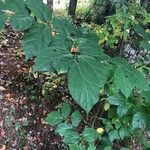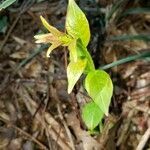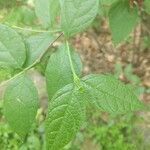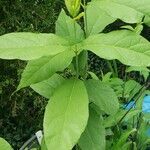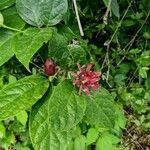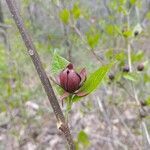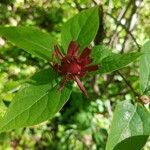Shrubs , to 3.5 m. Lateral bud partially hidden by petiole base. Petiole 3-10 mm, pubescent to glabrous. Leaf blade elliptic, broadly elliptic, oblong, or ovate, 5-15 × 2-6 cm, base acute to truncate, apex acute, acuminate, or blunt; surfaces abaxially green or glaucous, pubescent to glabrous. Flowers : hypanthium cylindric, ellipsoid, pyriform, or globose at maturity, 2-6 × 1-3 cm; tepals oblong-elliptic to obovate-lanceolate, 2-4 cm × 3-8 mm, apex acute; stamens 10-20, oblong. 2 n = 22, 33.
A shrub. It loses its leaves during the year. It grows 2-3 m tall. It spreads 2 m wide. The leaves, bark and wood all have a spicy aroma when cut. The leaves are broad and glossy and pale green. They are downy underneath. The flowers are 5 cm wide. The flowers occur singly among the leaves. The petals are narrow and deep red-brown. The flowers have a scent. The fruit are soft and fig like.
